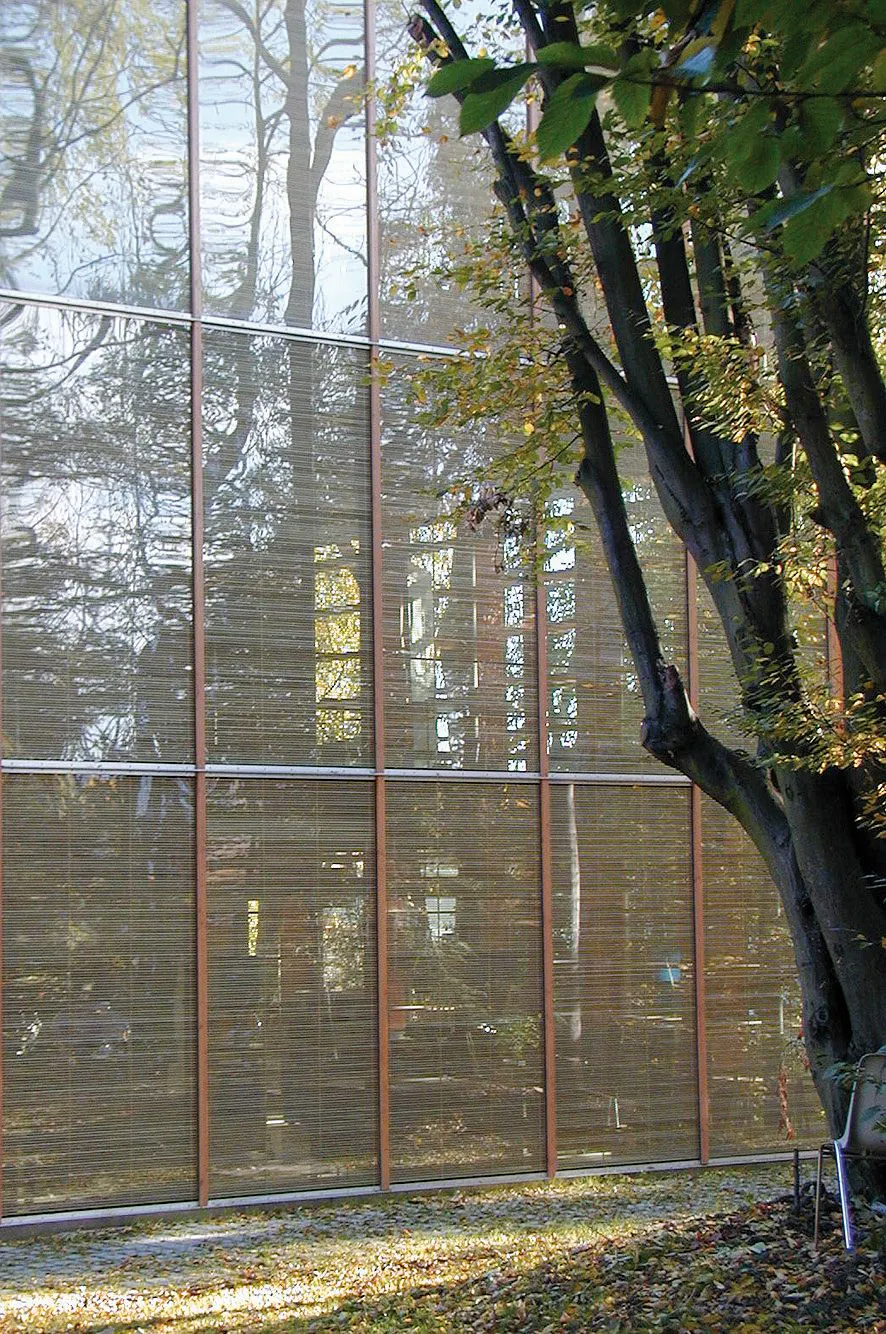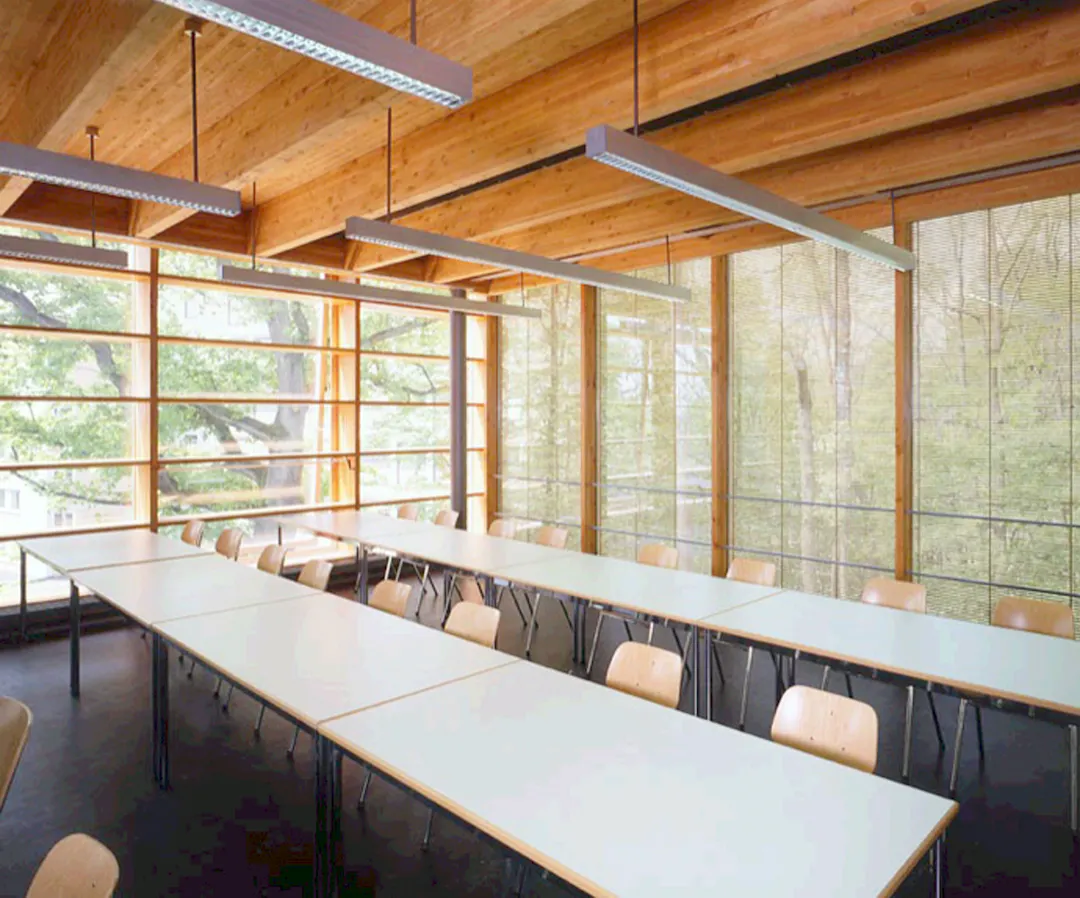After the first article was dedicated to the popular southern orientation, this time it's all about light from the east, the light of the rising sun. Here you can read what daylight from the east is all about, how it enlivens our rooms, and what to consider when planning rooms with an eastern orientation. The content relates primarily to the location of Switzerland with a pre-Alpine climate; however, the basic principles can be applied to any location, taking into account the location and local climate. After all, the sun always rises in the east, no matter where you are in the world.

Light from the east is the light of the rising sun. Dawn is characterized by a deep blue light, which quickly becomes more intense and warmer. The direct light at sunrise has a very warm red-orange color temperature of about 2000 K. Towards noon, the golden, warm morning light transforms into the yellowish-white midday sun.
Due to the symmetrical proximity to the horizon at sunrise and sunset, one might assume that the color temperature gradient is also perceived in the same way. However, we can distinguish morning light and evening light based on the color temperature and the clarity of the light. We perceive morning light as cooler, slightly bluish, and diffuse, with the light of the setting sun appearing redder and warmer. ¹ One explanation for this could be the morning air, which contains more moisture from the cool night, which in turn scatters the short-wave cool light more strongly.
Rouen Cathedral, Claude Monet, 1892-94. The series of pictures with a total of 33 images shows the cathedral in different light situations. The upper row shows morning moods, the lower three images evening moods. Source: Wikimedia Commons
Which rooms benefit from a east-facing orientation?
Spaces that benefit from an eastern orientation are primarily spaces where we spend time in the morning and where we can enjoy the incident sunlight. We are often still at home at this time of day, which is why our apartments and residential buildings benefit from a floor plan tailored to the morning light. Many people like to get up with the sun and prefer a bedroom that faces east. Children's rooms are also well located on an east façade, as the early morning light corresponds to their biorhythm. Bathrooms are also suitable, where we get ready for the day ahead
Kitchens are also well positioned on an eastern façade and can benefit from the pleasant golden morning light. Enjoying a cup of coffee in the morning with still faint rays of sunshine, whether at home at the kitchen table, or in the office in the sunlit kitchenette, is a pleasant start to the day. Such snapshots are important as experiences in our often jam-packed everyday lives and decisively determine the quality of our days. If we consider temporary moments and experiences when planning, we can do a lot for the quality of our surroundings and the perception of space.
Due to the staggered façade, it is possible to capture the sunlight on the long northeast façade (shown in the pictures) and southwest façade. The vertical divisions serve as sun catchers while providing privacy for the individual balconies. In Scandinavia, where sunlight is limited due to the short days in the winter months, as well as the often overcast sky, sunlight is particularly welcome. Green Solution House 2.0 in Rønne (DK) 55° latitude by 3XN / GXN Architects, Photos: Adam Mørk
Besides our residential buildings, reception areas, cafés and breakfast areas in hotels or public transport areas, such as train station halls, are ideal for exposure to the morning sun.
What should be considered when planning rooms on the east facade?
The sun rises in the east, which is the same around the world. However, there are only two days in the year when the sun rises in due east. This is the case on the equinoxes, the two days in the year when day and night are of equal length. The equinoxes are around March 21 and September 23. The rest of the year, the rising sun travels north and south around the exact east. On the longest day of the year around June 21 the sun rises in its most northeasterly position. As the days get shorter, the rising sun moves a little further south on the horizon day by day. Until it arrives at its most southeasterly position on the winter solstice around November 21. The difference between the two most extreme positions of the sun at our latitude at sunrise is 72°. Calculated on the 360° of the horizon circle this makes exactly 1/5, a rather big piece of cake.

It is surprising to see how the position of the rising sun changes so much throughout the season. In winter, we do well to catch the early morning light. In combination with heat gain, it allows you to get the most out of the incoming sunlight. In the warmer months, especially in summer, the morning sun can also quickly lead to overheating of the interiors. In summer, when the sun rises early and shines on the eastern rooms for a long time, external shading is indispensable.
Another difficulty of morning sunlight is the low position of the sun. The sun is almost horizontal in front of you, the glare that results from this can be extreme.
It should also be noted that from the afternoon at the latest, rooms with an easterly orientation are facing away from the sun. As a result, they can appear shady and gloomy. To avoid this, it is crucial to ensure that there is plenty of diffuse natural light filling the room.
How to protect yourself from the morning sun?
To protect yourself from the low sun, vertical shading elements are needed. Since the rising sun's position and the resulting incidence angle vary significantly throughout the year, adjustable and mobile shading elements are a viable option on the east and west facades. Sliding shutters or elements that move up/down are one solution. In some cases, shading elements protruding from the sides can be used to shade the sun shining sideways while allowing in diffuse daylight and an unobstructed view.
Vertical shading elements, like Blinds, roller blinds or shutters are often the only way to shade and reduce glare from the low sun. Vertical shades are effective at controlling glare and shading. However, they can negatively impact the view. This issue can be addressed by using semi-transparent or adjustable blinds. Another solution is to use blinds that adjust based on the position of the sun.

Since the sun enters the rooms at a different angle in summer and winter, permanently installed sun protection solutions such as slats should be adapted to the angle of incidence of the sun. Thus, up to a certain extent, the winter sun can be let in, while the summer sun is shaded. However, an in-depth geometry coordination of the slats with the position of the sun of the desired shading period is necessary here.
Summary
Sunlight from the east is the light of the rising sun. It changes from a soft orange sunlight to a blazing midday sun.
Rooms where we spend most of our time in the morning benefit from morning sunlight. Examples include bedrooms, children's rooms, bathrooms, and kitchens. Outside of our housing estates, reception areas, cafés, breakfast areas or public transport spaces are ideal for this purpose.
East and west facades are most exposed to overheating. It needs external sun protection. If solar heat input is desired in winter, internal glare protection must also be planned.
Due to the low position of the sun, vertical shading elements are in demand. Depending on the time of year, the position of the rising sun varies greatly. Therefore, the shading is ideally adjustable and adjustable.
____
This series was inspired by Amelia Lee's podcast Undercover Architect S1 Ep.2-5. I would like to thank the architectural firms and photographers who have provided me with the use of their work as sample projects.
Sources
1/ Yu, C. (2023). Light and Spectra in the Wild - Spectral Structures of Light Fields: Measurement, Simulation and Visualisation. Delft University of Technology.






















Comentários